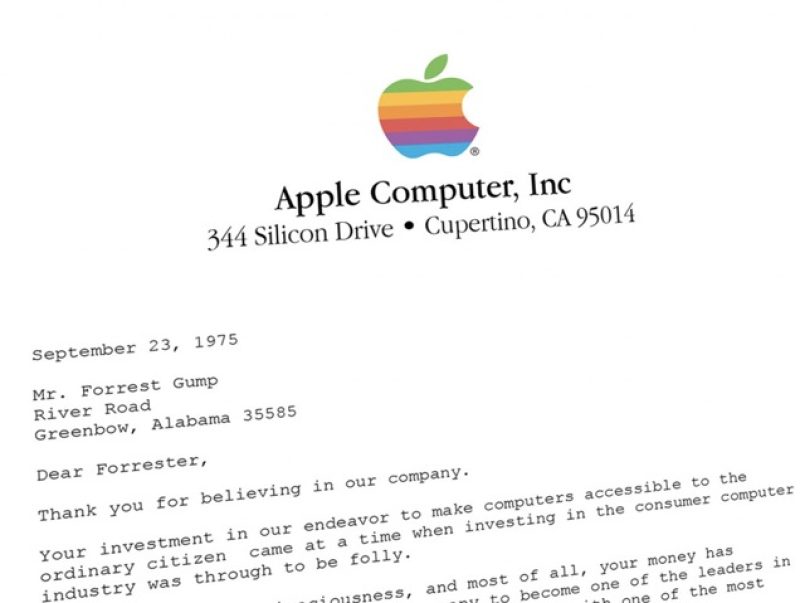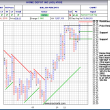by William Smead, Smead Capital
After watching “Forrest Gump” for about the thirtieth time recently, I realized that the US economy and US stock market share a great deal in common with Forrest. In this missive, we will be reminded of the journey of a true American folk hero and of the journey back from the abyss the US economy and stock market have made since early in 2009.
Forrest was a simpleton kid born with both mental and physical imperfections. He was “slow,” so teachers and students reminded him that he was stupid. His Momma’s response was “stupid is as stupid does.” Forrest graduated from high school and went off to college. He walked with braces until they came flying off as he evaded a group of bully’s. I can still hear his friend Jenny yelling, “Run, Forrest, run!”
The US economy was “slow” to recover these last four years as economic growth has been underwhelming compared to the rebound from prior recessions. Esteemed economists (brilliant pessimists) have told simpleton optimists how stupid they are for having confidence in the future of the US economy and for buying US stocks. They said that the record levels of over-hanging debt would cripple the US economy for decades and to not commit much of your capital to domestically-oriented US stocks.
Now we believe Fed Chairman, Ben Bernanke, is about to take the “braces off” the US economy by reducing the stimulative monetary policy of the last four years. Forrest did fine without his Momma in college and we believe the US economy will do fine after monetary stimulus is reduced and ultimately eliminated. Did we forget to mention that Forrest was an All-American in football and went to the White House to meet the President? Most of the brilliant pessimists of today fail to remind you of how much their “brilliant” pessimism cost investors the last four years. Here is an example of a recent Wall Street Journal article called, “Lofty Profit Margins Hint at Pain to Come for Stocks”:
If you are wondering what might prove to be the stock market’s Achilles’ heel, look no further than its dependency on near-record corporate profit margins. Any sizable decline would almost certainly translate into big losses for the stock market…
…Profit margins in the past have exhibited a strong historical tendency to “revert to the mean,” according to James Montier, a visiting fellow at the U.K.’s University of Durham and a member of the asset-allocation team at Boston-based GMO, an investment firm with $108 billion under management. That is, above-average levels in the past have tended to quickly fall, just as below-average levels in the past have soon risen…
…Another factor contributing to expanding profit margins in recent years is the shrinking share of gross domestic product going to worker compensation, according to Robert Arnott, chairman of Research Affiliates, an asset-management firm with $150 billion under management. This trend also is unlikely to continue, because, if it were to do so, “the backlash would be so widespread that it could turn Occupy Wall Street into a mainstream event,” Mr. Arnott said in an interview.
Forrest went on to be a war hero by saving his Army buddies in Vietnam. He took up ping pong and became an international champion. He then bought a shrimp boat. Despite a dismal first season, Forrest became the co-owner of the Bubba Gump Shrimp Company. For Forrest, “life is like a box of chocolates, you never know what you are going to get.”
Our point is that if he had listened to the teachers, principals, doctors, Army officers, ping-pong experts and shrimp captains, Forrest would have thought he had zero chance of succeeding. You see, Forrest had the innate ability to drill down to what matters. He was simple enough to focus only on the task in front of him and not worry about the things he couldn’t control. What we think Mark Hulbert missed in his WSJ article about profit margins was where we are in the economic cycle and the mass psychology which has been primarily created by firms like GMO.
The last time corporate profits were this high as a percentage of US GDP was in 1952 after six years of simulative monetary policy from the Federal Reserve following WWII. We came out of WWII with 112.7% of GDP in US Treasury debt. It was used to fund the winning war effort against Germany and Japan. On top of that debt, the US implemented the Marshall Plan to help our former allied and enemy nations, as well fund the G.I. Bill. The Fed put braces on the Treasury bond interest rates just like Ben Bernanke did this time. Corporate profits were at a record level of 10% of US GDP in 1952 and reverted to the mean in the following five years just as the brilliant pessimists explained in the article. Unfortunately for the pessimists, the Dow Jones Industrial average quadrupled from 1952 to 1966 as returning war vets triggered a “baby-boom” and the US economy grew its way out from under the debt load.
GMO’s Mr. Montier and Research Affiliates Robert Arnott didn’t just wake up last week and decide to be negative about the US stock market and the US economy. They invented slogans like “Seven Lean Years” and scared investors away from practicing long-duration, fully- invested common stock ownership. From our vantage point, the psychology created by these folks plays out in under-ownership by institutional and high net worth individuals of US common stocks and has only been slightly dented by the bull market the last four years. Here is what Mr. Arnott said about US stocks two years ago:
We’re not saying that the P/E ratio will fall to 13 in the year ahead. We’re merely pointing out that the path we’re on—low or negative real interest rates, with a conscious attempt to introduce moderate levels of inflation—is very dangerous. While low interest rates are fueling higher stock market multiples, this policy may haunt investors in the years ahead. The combination of higher inflation and lower real interest rates poses a dangerous threat to stock market valuation levels. The risk is that current Fed policies may throw the stock market king off the mountain.
Remember, “life is like a box of chocolates” and “you never know what you are going to get.” Here are the factors we focus on that allow us to take advantage of long-duration common stock ownership in this less than perfect environment:
- The US economy has had a major and historical five-year cleansing.
- Banks are over-capitalized and making sensible lending decisions.
- S&P 500 companies carry loads of cash on their balance sheet and are producing high levels of free cash flow.
- Household income statements are the best they’ve been since the Federal Reserve Board started keeping track of household debt service ratios at the beginning of 1980.
- Housing is the most affordable in my lifetime. (We can thank GMO’s Edward Chancellor for putting out a great report on housing in 2011.)
- Demographics are incredibly favorable in the US with 86 million 18-37 year olds concentrated around the age of first marriages and first babies. Household formation took off in 2012 as a result of the largest population group matching up with societal norms.
- The “brilliant” folks have created a wonderful ongoing “wall of worry” which reestablishes itself on any 5-10 percent correction in US stocks.
- US common stocks have produced 6% per year capital growth historically with an average P/E ratio of 15. The consensus of estimates for 2014 is 14.3 PE on the S&P 500 index.
We could go on, but we believe this economy and stock market are as underestimated as Forrest Gump. At Smead Capital Management we intend to keep our focus on seeking out undervalued companies of great merit and show the same kind of faith in the future that led to Forrest’s success in this less than perfect world.
Best Wishes
William Smead
The information contained in this missive represents SCM’s opinions, and should not be construed as personalized or individualized investment advice. Past performance is no guarantee of future results. It should not be assumed that investing in any securities mentioned above will or will not be profitable. A list of all recommendations made by Smead Capital Management within the past twelve month period is available upon request.
This Missive and others are available at smeadcap.com
Copyright © Smead Capital














